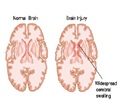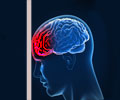This day, March 20, we celebrate head injury awareness day. This ‘celebration’ acquires specific significance in India, which has the largest annual incidences of head injuries.

Accidents, home and occupational hazards, falls and assaults cause head injuries or trauma to the head.
Bicycle falls are a leading cause of head injuries in children.
Head injuries may include injuries to the brain as well as to the scalp and the skull.
They range from the minor such as abrasions or lacerations to the scalp to those involving serious consequences such as damage to the brain or traumatic brain injury (TBI).
A head injury can be classified as either closed or penetrating. In closed head injury, the head sustains a blunt force by striking against an object while in penetrating head injuries, a high velocity object breaks through the skull and enters the brain. Some head injuries result in prolonged or non-reversible brain damage, which range from personality changes to even a state of coma.
Loss of consciousness, even for a very brief period, is one of the clearest indications that a blow to the head may have affected the brain. Other danger signs are bleeding or leaking of fluids from the ears, nose or mouth, convulsion, confusion and fracture.
Precautions to avoid or minimize head injuries include wearing helmets; even for short distances, supervising children and providing them with safe areas to play, obeying traffic rules, not mixing drinks with driving and wearing seat belts.
Helmets are arguably the best means of preventing head injuries.
Motorcyclists are more prone to crash-related head injuries as the vehicles are unenclosed leaving the rider vulnerable to contact hard road surfaces. Helmets decrease the severity of head injury and the likelihood of death by effectively preventing damage to brain in a crash.
Despite awareness drives by government agencies and the law enforcers in India, emphasizing the need to wear helmets while riding, the tendency among motorcycle riders to drive without helmets has persisted. In this context making helmets compulsory for two- wheel drivers in Tamil Nadu state of India, must be lauded, as the default decision of most motorcyclists is to shelve the helmet.
In the event of a person suffering a brain injury, prompt medical treatment may prevent the worsening of symptoms, and lead to a better outcome.
Paramedics will generally immobilize the patient to insure no further damage to the spine or nervous system, while in some cases medications may be administered to sedate or paralyze the patient, in order to prevent additional movement. The patient should be delivered promptly to a hospital with neurosurgical capabilities.
In the context of brain injury awareness week, the Brain Trauma Foundation (BTF) of U.S has announced its decision to extend its mission to India. This is by the establishment of a new trust in Delhi called the India Head Injury Foundation (IHIF). The IHIF aims to make use of electronic technology to disseminate life-saving information to rural areas and thereby help decrease incidences of head injuries. It will also be sharing intellectual expertise with leading hospitals in order to improve outcomes of patients suffering from brain injuries.
Source-Medindia
ANN











